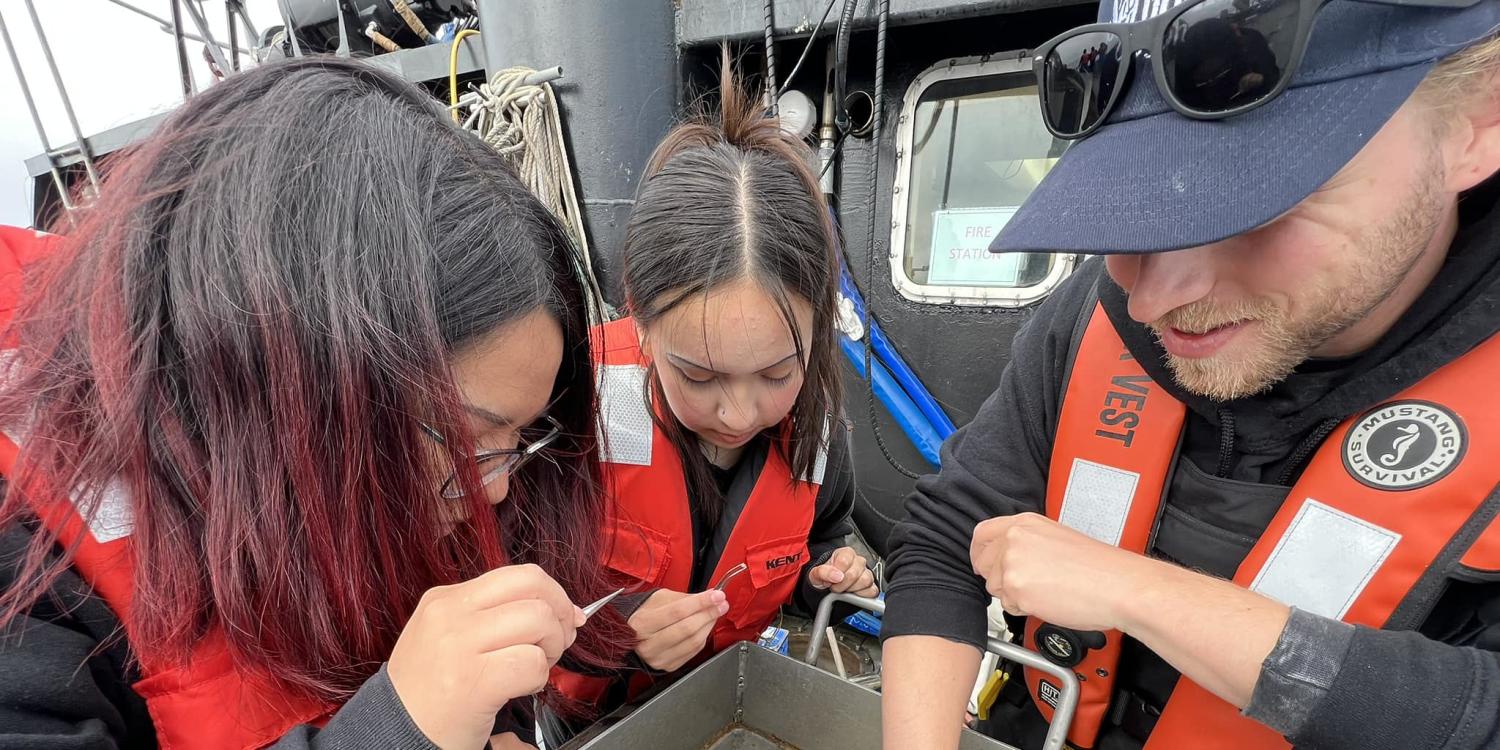
To keep pace with the workforce demands of the 21st century, there’s a growing need to provide students with immersive STEM experiences, including in marine science.
To meet this need, since 2016 Oregon Sea Grant has been organizing and sponsoring cruises in which high schoolers, community college students and their teachers get a taste of what it’s like to conduct research at sea. The goal is to inspire the students to pursue marine-related careers involving science, technology, engineering and math (STEM). The program, which is called STEM at Sea, is one of the ways we are supporting the development of a robust and diverse blue economy workforce through hands-on, career-connected learning.
Between 2016 and 2023, over 200 high schoolers and 30 community college students participated in 25 trips, according toTracy Crews, Oregon Sea Grant’s associate director of education. As part of Sea Grant's commitment to diversity, equity and inclusion, some of the cruises have been specifically for students from Chemawa Indian School and for high schoolers in an English language development program consisting largely of Hispanic students and some Ukrainian youths.
During the cruises, postdocs, research assistants and graduate students from Oregon State University teach the students how to use scientific equipment to carry out their research. For example, a doctoral student who was studying the effects of low oxygen on juvenile English sole taught the teens to use a net to catch the tiny fish along the seafloor. For another project, students caught skates to be used in a study on how offshore energy infrastructure might impact them. In a third project, students deployed equipment to film the seafloor and collect sediment-dwelling animals in an effort to gather baseline data at wave energy test sites.
The students have also learned to collect plankton, deploy equipment to measure the salinity and temperature of the ocean at different depths, identify and count seabirds and marine mammals, and use a drone to film whales. Sometimes the excursions lead to unexpected findings, like the times the participants netted tens of thousands of juvenile sand dollars and discovered a large population of burrowing shrimp in a new location off Oregon.
The job-shadowing program is already having an impact. In a survey, 80% of the 22 English language learners who participated in cruises in 2023 said they are now more knowledgeable about different STEM career pathways that relate to the ocean. One of those students wrote, “This experience really helped me to realize what STEM opportunities there are out there. It also helped me to better understand the ocean and the marine life that is out there.”